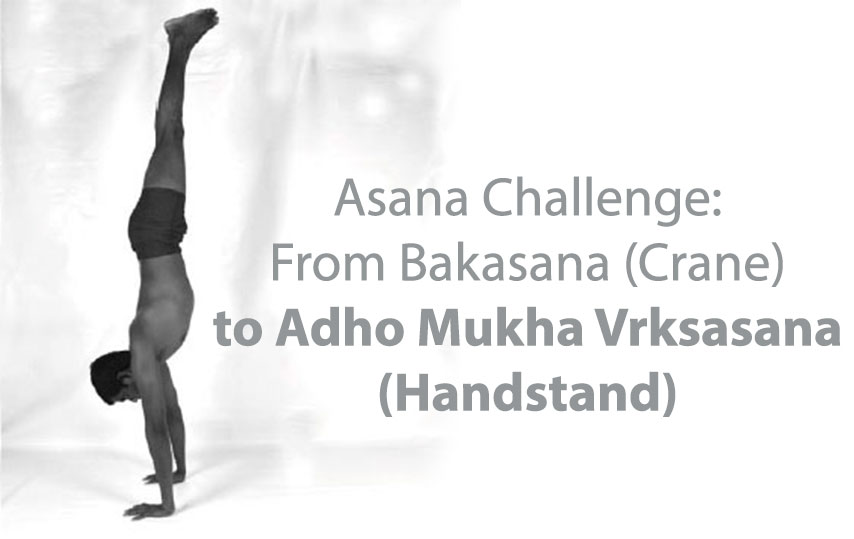
1. Building a strong foundation
The ribcage is the base from which the shoulder acts to support your arms. By lengthening the neck, it can ?rm and shape your ribcage. This in turn will straighten the spine so that you will be able to lift your pelvis by holding on ?rmly with the arms. Lengthening the neck is one way of opening and ?rming your ribcage giving the arms a ?rm base. Expanding and ?rming the ribcage will provide a strong foundation.

2. Straightening the thoracic spine
After lengthening your neck, try to extend your thoracic spine against the gravitonal force and it helps to activate the erectors (the muscles besides your backbones). From Bakasana, continue to press both shoulder blades against the ribcage, sucking in your thoracic spine into the ribcage. This action will in turn bring your arms, shoulders, spine and ribcage aligned together to support the weight of your pelvis.

3. Engage the abdominals
he next important element when lifting into handstand from Bakasana is using the abdominal muscles to lock the ribcage into the pelvis. Your abdominal muscles do not have to be super strong. You just need to engage them so that the ribcage and pelvis come together as one unit. This will enable much easier control and balance on the top of your arms and hands.

4. Press down to lift
From Bakasana, keep hugging your hips towards to the midline. Inhale; lift your hips with bent knees by strongly pressing your hands into the mat. You will have to expand and ?rm your thoracic spine by lengthening the neck. Continue lifting the hips until you feel the centre of gravity over the hands. As soon as you ?nd your centre, keep engaging the abdomen and begin to lift your knees to straighten them. From there, try to extend the legs by reaching through the inner arch of the foot. Keep the gaze forward. With patience and dedication, you’ll be able to stand on your hands in no time.
A word of caution: do not attempt this on your own unless you are confident in doing both Bakasana and handstand without assistance.


















 Other
Other